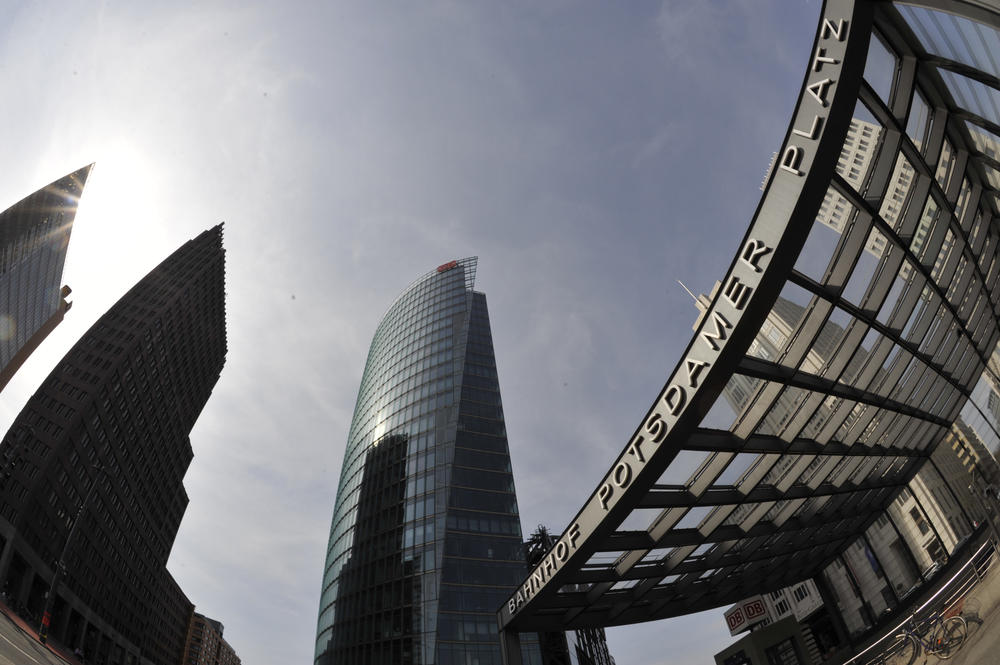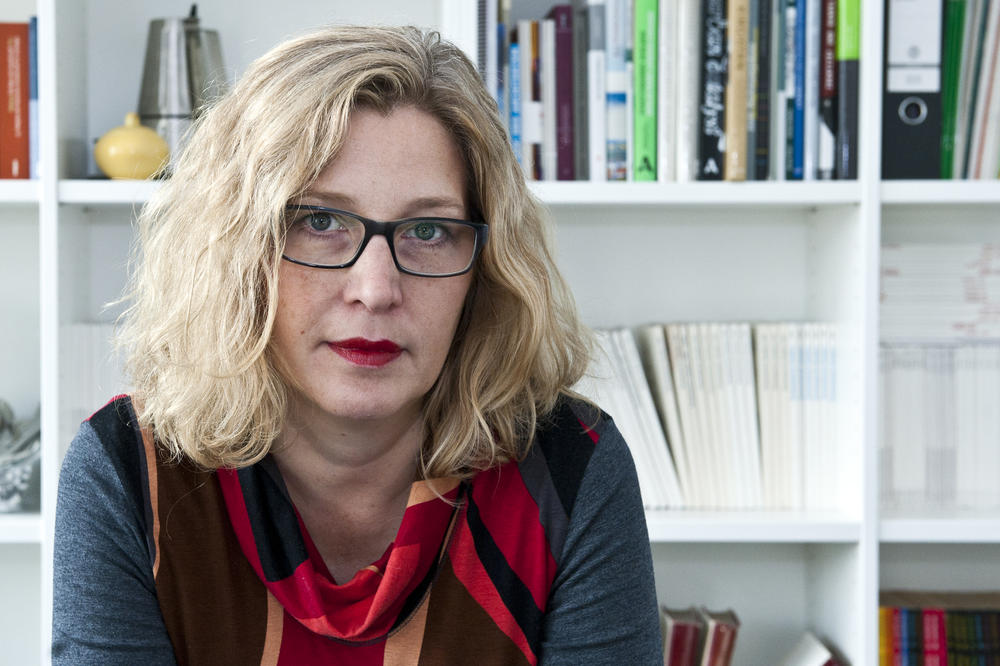More than Three Dimensions
In a new Collaborative Research Center at Technische Universität Berlin, researchers investigate changes of spatial concepts caused by digitization and globalization.
May 24, 2018
From long-distance train stations and an entertainment strip to Europe’s largest inner-city construction site - Potsdamer Platz, and thus its role within Berlin, has changed time and again over the last 180 years.
Image Credit: Bernd Wannenmacher
Some people open up spaces with their smartphone to get directions. The immediate environment would otherwise remain closed to them without the little helper. Others, who are in contact with people looking at their mobile phones in other places around the world and sharing images of these spaces, are thus using their smartphones in entirely different places from where they are now. Digitization is changing our relationship to both real and virtual spaces, and globalization is adding to this. “We have been experiencing an intensive reproduction of spaces since the 1990s,” says Martina Löw. “On the one hand, this has an impact on our daily lives and, on the other, considerable consequences for society as a whole.” The planning and architectural sociologist at Technische Universität Berlin is heading the new “Re-Figuration of Spaces” Collaborative Research Centre, funded by the German Research Foundation (DFG). For an initial period of four years, researchers from disciplines as diverse as urban planning, sociology, communication science, and geography at Technische Universität Berlin, Freie Universität Berlin, and Humboldt-Universität zu Berlin are investigating how people are renegotiating, changing, and adjusting the relationship to their spaces, as well as the social, political, and technological consequences of this – and how this process can be controlled. What is meant by the term “space” in each case can encompass very different types of spaces.
“Digitization and globalization may be opening up opportunities, but they are also calling into question some certainties.”
“This very fundamental change in the way people are experiencing and creating their spaces cannot occur without any conflict,” says Löw. This can also be seen, for example, in the way political spaces are changing: “In view of the hotly debated globalization, for example, we are experiencing that nation-state spaces are also being overridden by internationally networked ones as a relevant variable.” These include, among others, the EU, whose design and expansion is the subject of fierce debate. Many special economic zones are also emerging around the world that are calling into question the principle of national unity. “Digitization and globalization are, on the one hand, opening up opportunities but, on the other, they are calling into question some certainties,” says Löw. “The lower the level of education, the older the people, the lower the income, the greater the fear of rapid change.” Countermovements are finding expression, for example, in Brexit or in the Trump government’s termination of free trade agreements. As the USA tightens its border with Mexico or the EU its external borders, increasing conflicts over space are also becoming apparent.
Martina Löw is a planning and architectural sociologist at Technische Universität Berlin and heads the new “Re-Figuration of Spaces” Collaborative Research Centre, funded by the DFG.
Image Credit: Jacek Ruta/TU Berlin
The researchers of the Collaborative Research Centre are investigating new spatial structures and new spatial knowledge in an interdisciplinary way. Its aim is to develop an overarching perspective for analyzing the current changes in the social order. “There is a tension here between the classic model of modernity that is asserting itself worldwide with its centralized nation-states, borders, and national economies, and post- or late-modern transnationalization with its delimitation, polycentrism, and globalizing expansion,” explains Löw. “This tension is resulting in the re-figuration of spaces.” Here, the city plays a relevant role as a living space. Cities are intersections of globalization and also often technical pioneers in digitization.
“On an urban scale, this fundamental change can be more easily facilitated and shaped by local politics,” says Löw. “Planning and architecture have already changed with the complex mechanisms of spatial constitution, and citizen participation, for example, is becoming increasingly important.” Songdo in South Korea, for example, illustrates how consistently rooms and thus our lives are already being well-planned today: a smart city the size of downtown Boston, only higher and denser, it can now be bought as a complete package and, like a prefabricated house, can be easily implanted at various locations. The city, like something from a box of spare parts, has already been sold twice to China. It was designed by a real estate developer for $40 trillion. It should be possible in future to reproduce the Songdo prototype twice as quickly at half the price: the same lighting strategy, the same traffic management system, the same elevators, air conditioning, monitors in the houses. But the special thing about the “thinking city” is that, there, you can not only geotrack your demented parents, but also keep an eye on your children in the playground or compare your own energy consumption with that of your neighbors.
“Berlin teaches its inhabitants a certain loneliness.”
Berlin is also a pioneer in the re-configuration of spaces – as a center for science and research: research on spatial theory, an intensive cooperation between architecture, planning, and social science as well as a very good cooperation between geography and spatial sociology come together here. “These are unique constellations,” says Löw. “First, they promise the development of innovative spatial scientific methods and, second, the Collaborative Research Centre’s development of transdisciplinary spatial research.” Löw, the urban theorist whose research has also focused on the German capital, is certain that Berlin entices its inhabitants into a certain loneliness: “People almost everywhere emphasize that their cities somehow gives them something in common and something they can share with each other – only in Berlin do people say: ‘We have nothing in common!’” At least in the field of spatial research, the Collaborative Research Centre now wants to prove with its interdisciplinary and interuniversity work that there are other ways of doing things. Together with her deputy Hubert Knoblauch, a professor of sociology at Technische Universität Berlin, Löw also intends to find answers to some practical questions: “Under the umbrella of the concept of re-figuration, we want to be able to use room analyses to provide an answer to the question: What society are we living in today, and what should it look like tomorrow?”


